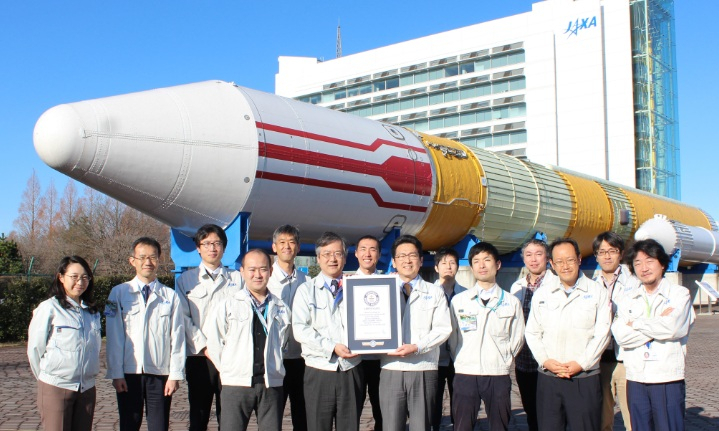Japan Aerospace Exploration Agency (JAXA) has announced that its Super Low Altitude Test Satellite "TSUBAME" (SLATS) was registered by the Guinness World Records after reaching the "lowest altitude by an Earth observation satellite in orbit," a feat no other satellite could achieve. More than that, the strategic applications of such observation satellites brighten the future of monitoring movements on earth's surface closely than ever from the space.
Tsubame reached the lowest altitude by an Earth observation satellite ever in orbit at 167.4 km (104 miles) during its recent mission from Dec. 23, 2017 to Oct. 1, 2019. Tsubame's ion engine enabled it to capture high-resolution satellite images despite atmospheric drag or density of atomic oxygen present in super low altitudes, said JAXA in a statement.

Often, the super low altitude has been considered unsuitable for Earth observation satellites since they require precise positioning, orbit control and long-term satellite operations. When in orbit at a super low altitude that is between 200 km and 300 km, the satellites undergo nearly 1,000 times more atmospheric resistance and concentrated atomic oxygen making them vulnerable to deterioration compared to other Earth observation satellites orbiting at the usual altitudes.
Ion engine technology
The satellite has also successfully demonstrated that the material developed by JAXA has the ability to withstand exposure to atomic oxygen for a long period of time and entered the Guinness Book of world Records, said JAXA. In his remark, the SLATS project manager Sasaki Masanori said, "We managed to create this unprecedented satellite that is able to maintain orbit in super low altitude, not only because of the systematic and fundamental technologies that we possess to develop and operate artificial satellites, including our many years of experience of the ion engine and the tracking and control technologies."

Japan's Tsubame was able to maintain seven different orbital altitudes during its operations, with 167.4 km being the lowest, where it used both its ion engine system and gas-jet thrusters. It first maintained an orbital altitude of 271.5 km, which was gradually lowered to finally reach the 167.4 km altitude, reaching a world record as per the Guinness World Records.
Seven days at super low altitude
The same super low altitude of the satellite's orbit was maintained for seven days, and Tsubame conducted tests on taking high resolution satellite images, and succeeded in obtaining good results, said JAXA. The test satellite also succeeded in acquiring data of atmospheric density, atomic oxygen density, and the level of deterioration of material samples that were exposed to the atmosphere. Currently, JAXA is conducting research to make use of super low orbit altitudes of less than 300 km for future earth observations and strategic applications.
Specifications, launch and operational results of TSUBAME:
| Items | Specifications, achievements, etc. |
|---|---|
| Main mission instruments | (1) Atomic Oxygen (AO) Monitoring System
(2) Small and High Resolution Optical Sensor |
| Size | 2.5 m (X) × 5.2 m (Y) × 0.9m (Z) (when expanded in orbit) |
| Weight | 383 kg |
| Generated power | 1,140 W or more |
| Design life | 2 years or longer |
| Results of Orbital Maintaining Operation | Tsubame successfully completed its orbital maintaining operation using ion engine technology at all the seven altitudes as follows: 271.5 km and 216.8 km each for 38 days 250 km, 240 km, 230 km, 181.1 km, and 167.4 km each for 7 days (At 167.4 km altitude, Tsubame used both its ion engine system and RCS because of the large atmospheric drag.) |
| Launch date | December 23, 2017 |
| Launch vehicle | Launch on an H-IIA rocket number 37 |
| Operation end date | October 1, 2019 |









